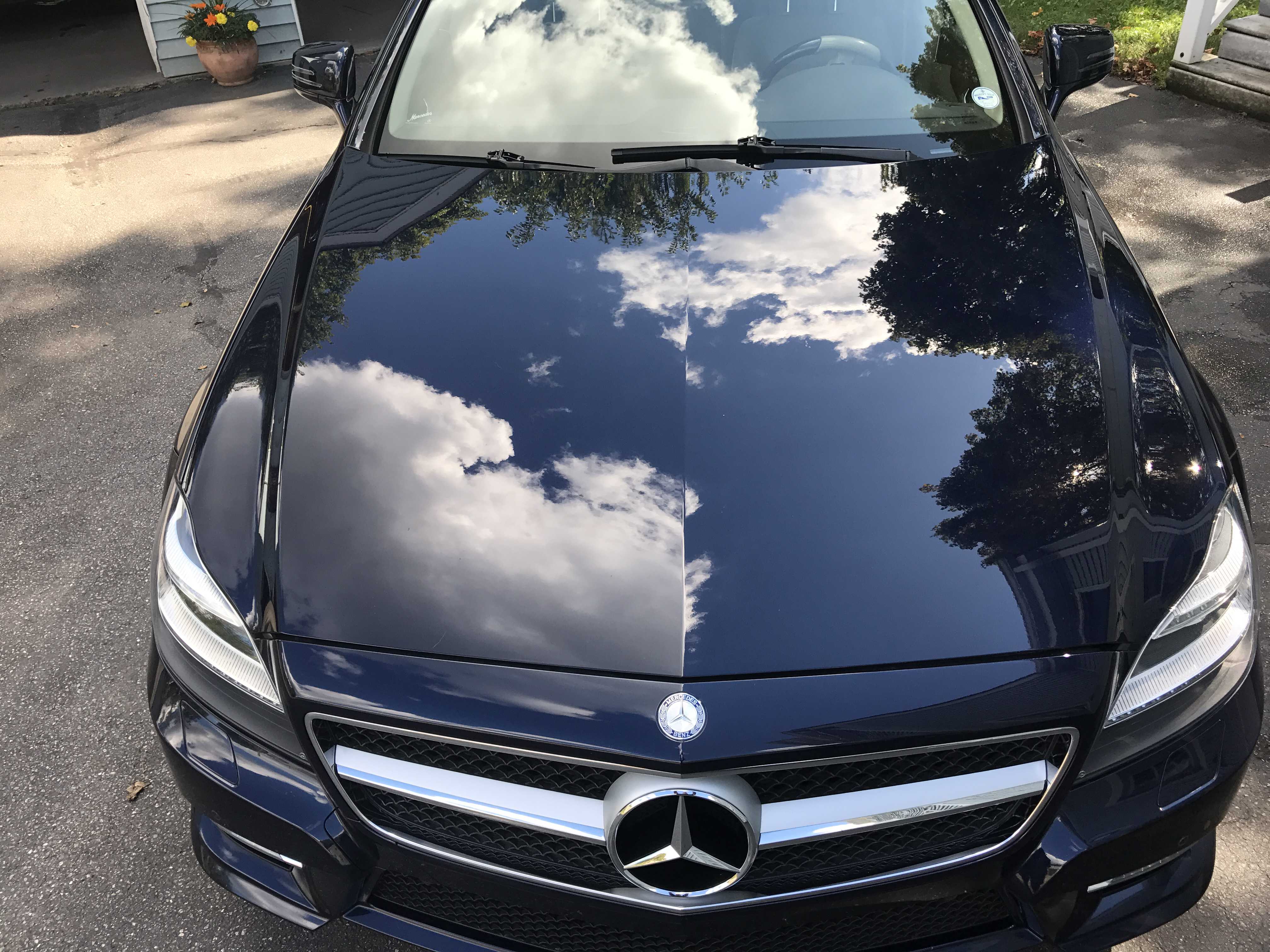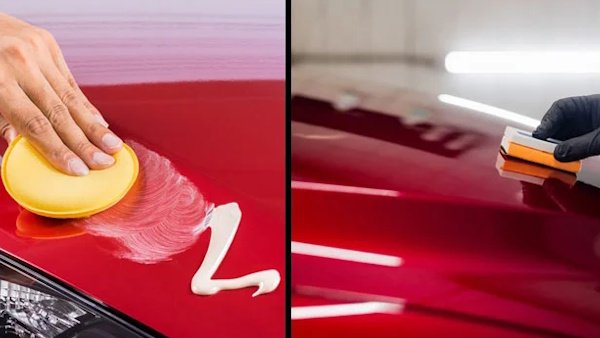Checking out the Scientific Research Behind Car Ceramic Coating and Its Protective Qualities
The scientific research of car ceramic coating provides a remarkable study in advanced automobile defense. Composed mainly of silicon dioxide and polymers, these layers form a robust bond with vehicle paint. This communication boosts durability versus ecological hazards while providing hydrophobic advantages. The complexities of just how these layers job and their long-term advantages remain much less recognized. Ceramic Coating Newark. Unboxing these details discloses why ceramic finishings are coming to be a favored selection for car treatment
What Is Ceramic Coating?
Ceramic coating is a liquid polymer that chemically bonds to the surface area of a lorry's paint. This sophisticated protective layer improves durability and supplies remarkable resistance to environmental variables. Unlike conventional wax or sealants, which supply short-lived security, ceramic layers develop a resilient shield that can withstand extreme conditions such as UV rays, acidic pollutants, and extreme weather. When applied appropriately, the coating develops a hydrophobic surface, creating water to grain and slide off, which assists in maintaining the car's cleanliness. Furthermore, it provides improved gloss and depth to the paint, making the lorry show up more refined and dynamic. The application procedure commonly involves extensive surface prep work, consisting of cleaning and polishing, to ensure peak bonding. As a result, ceramic coatings are coming to be increasingly preferred among car lovers and those seeking to protect their investments, assuring to maintain the automobile's visual appeal while lowering the frequency of maintenance.
The Composition of Ceramic Coatings
The detailed solution of ceramic layers largely contains silicon dioxide (SiO2), which is originated from all-natural sources like quartz and sand. This key element supplies the structure for the coating's toughness and safety qualities. In addition to SiO2, ceramic finishes often consist of different polymers and additives that enhance bond, versatility, and resistance to environmental variables. These substances work synergistically to create a durable obstacle versus contaminants such as dust, chemicals, and UV rays.Furthermore, some formulas incorporate titanium dioxide (TiO2) or various other nanomaterials, which can increase the coating's hydrophobic residential or commercial properties, leading to enhanced water repellency. The accurate make-up can vary significantly amongst producers, influencing efficiency and long life. Eventually, the mix of these components finishes in a safety layer that not just improves the aesthetic charm of lorries yet additionally offers to extend their life expectancy by protecting the surface area from possible damage.
Exactly How Ceramic Coatings Work
Understanding how ceramic finishes work includes exploring their chemical make-up, which adds to their protective top qualities. The application process is crucial for attaining suitable results, while long life and sturdiness elements determine the coating's efficiency in time. Together, these components highlight the advantages and efficiency of ceramic finishes for automobile security.
Chemical Composition Explained
While several car proprietors seek durable defense for their automobiles, the chemical composition of ceramic coatings plays a crucial duty in their efficiency. These coverings largely consist of silicon dioxide (SiO2), which is stemmed from all-natural minerals. This substance develops a solid bond with the automobile's paint, developing a resilient, safety layer. Furthermore, numerous ceramic coverings consist of titanium dioxide (TiO2), boosting their hydrophobic homes and resistance to UV rays. The existence of polysiloxanes can additionally boost versatility and sturdiness. With each other, these aspects add to the coating's ability to push back water, dust, and impurities, while additionally giving a high-gloss coating. Recognizing this chemical structure aids car owners appreciate the robust protection provided by ceramic coatings.
Application Process Introduction
Using ceramic coatings involves a careful process that assures perfect bonding and security for the automobile's surface area. Complete cleaning and purification of the car's exterior are carried out to eliminate dirt, gunk, and previous waxes. This action validates that the surface area is devoid of contaminations that might hinder bond. Following this, the paint is frequently brightened to enhance clearness and eliminate any kind of imperfections. As soon as prepared, the ceramic coating is used in small areas making use of an applicator pad, permitting consistent protection. The coating is then left to heal, developing a solid chemical bond with the surface. Appropriate treating times and conditions are essential, as they verify the coating achieves its optimum performance and safety top qualities.
Durability and Toughness Aspects
Ceramic finishes are created to give lasting defense through their innovative chemical composition, which creates a durable barrier against ecological contaminants. The sturdiness of these coatings is influenced by elements such as the density of the application, the quality of the product, and the problems under which the lorry is exposed. Top notch ceramic finishings can last several years, withstanding scratches, UV rays, and chemical discolorations. Proper maintenance, consisting of routine washing and routine reapplication, can even more boost durability. Furthermore, environmental factors like environment and exposure to contaminants can impact the life-span of the coating. In general, when used and preserved appropriately, ceramic finishes offer phenomenal longevity, making them a preferred choice for car lovers seeking to maintain their vehicle's appearance.
Hydrophobic Properties and Water Repellency
Hydrophobic homes are a trademark of high quality car ceramic coatings, considerably boosting the car's surface efficiency. These layers develop a molecular bond with the car's paint, causing a surface that repels water successfully. When water enters into contact with a ceramic-coated surface, it grains up and rolls off, decreasing the amount of fluid that remains on the paint. This actions not only adds to a visually pleasing appearance but additionally minimizes the build-up of impurities such as dust, crud, and roadway salts.The improved water repellency leads to easier cleansing and upkeep, as less effort is required to remove unwanted substances. In addition, the hydrophobic nature of ceramic finishes aids in avoiding water spots, which can mar the surface of uncoated surface areas. Generally, the incorporation of hydrophobic residential properties in ceramic coverings plays an essential duty in keeping the vehicle's pristine look while streamlining upkeep.
Protection Against Scratches and UV Damages
Car ceramic finishings offer considerable security against scratches and UV damages. The scrape resistance system develops a resilient layer that takes in impacts, while the UV securing advantages help keep the lorry's paint integrity over time. With each other, these functions add to a longer-lasting and aesthetically appealing coating.
Scrape Resistance Mechanism
Making use of sophisticated innovation, ceramic coverings supply a robust guard versus scratches and UV damages, enhancing the long life and appearance of car surface areas. The scratch resistance system of these coatings is associated to their unique molecular structure, which creates a long lasting bond with the lorry's official website paint. This bond produces a hard, protective layer that can soak up influences and stand up to abrasions. Additionally, the smooth surface of the coating lowers friction, making it challenging for impurities to adhere and trigger scratches. The chemical make-up of ceramic finishes frequently consists of nanoparticles that reinforce the protective layer, more enhancing its durability. Subsequently, cars treated with ceramic coatings display substantially enhanced scrape resistance contrasted to traditional wax or sealants, guaranteeing a pristine surface in time.
UV Shielding Benefits
The safety qualities of ceramic layers prolong beyond scrape resistance to include significant UV protecting benefits. These coverings create a robust obstacle that shows damaging ultraviolet rays, protecting the vehicle's paint and underlying products. Extended direct exposure to UV radiation can bring about fading, oxidation, and degeneration of the paint coating. By integrating ceramic finishings, car owners can properly minimize these threats, protecting the aesthetic charm and stability of their automobiles. Additionally, the UV obstructing properties contribute to improved durability, reducing the regularity of painting and upkeep. Eventually, the integration of ceramic coatings supplies a thorough option for safeguarding automobiles from the harmful effects of sun direct exposure, making sure a sustained, lively appearance gradually.
The Durability and Maintenance of Ceramic Coatings

Regularly Asked Questions
Can Ceramic Coating Be Applied to Any Type Of Sort Of Automobile?
Ceramic coating can be related to numerous kinds of lorries, including automobiles, vehicles, and bikes. Surface area preparation and compatibility with specific materials are essential for excellent bond and efficiency of the coating.
How Much Does Ceramic Coating Usually Cost?
Ceramic coating normally sets you back between $500 and $2,000, depending on factors such as car size, coating top quality, and professional application. The financial investment can provide lasting protection and boost the lorry's appearance in time.

Is Professional Application Required for Ideal Outcomes?
The requirement of expert application typically depends upon desired outcomes. Professionals usually ensure proper surface prep work and application methods, resulting in excellent bonding and long life of the coating, which might be challenging for unskilled people to accomplish.
Can Porcelain Coatings Be Eliminated or Fixed?
Ceramic finishings can be gotten rid of or repaired, though the procedure may need specific solvents or methods - Ceramic Coating Newark. Appropriate elimination is vital to stay clear of damage to the underlying surface area, emphasizing the value of specialist aid for optimal outcomes
How Does Porcelain Coating Contrast to Traditional Wax?
The comparison in between ceramic coating and typical wax exposes that ceramic coverings supply exceptional durability, boosted protection against environmental contaminants, and longer-lasting luster, while see this wax requires a lot more regular application and offers less total resistance to damage.